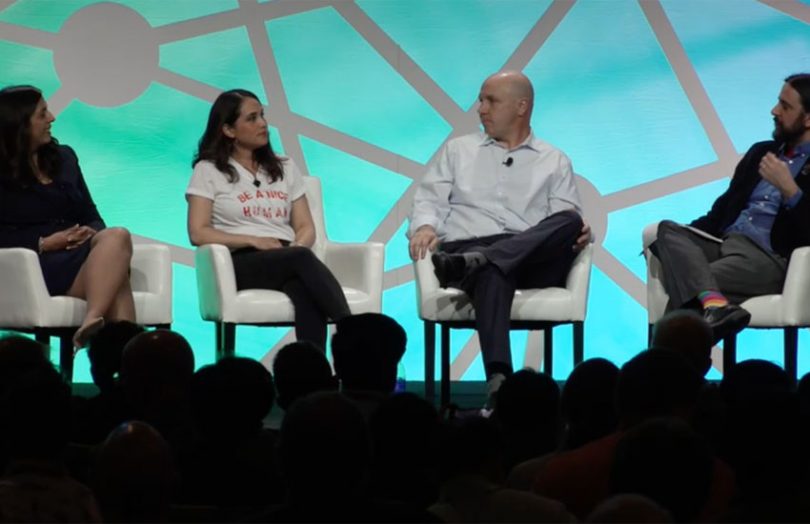Last week at the Hyperledger Global Forum in Phoenix, a panel featured speakers from Walmart, Amex and Honeywell Aerospace. The answers to several questions gravitated to the issue of interoperability.
Walmart’s Archana Sristy commented that it would be presumptive to assume that everyone is going to be on the same technology framework.
While Walmart is known for its participation in the IBM Food Trust, late last year, it took part in two pharmaceutical supply chain projects, one with MediLedger and the other with IBM. In the U.S., DSCSA legislation for pharma is rolling out in stages, requiring interoperability across the entire supply chain.
Referring to the two DSCSA pilots Sristy said: “They’re both completely different flavors of blockchain. You’ve got Hyperledger Fabric on one side and then Ethereum on the other. So there’s going to be so many networks that might emerge to address the DSCSA requirement.”
She continued: “I think that interop becomes even more important. Are you expecting everybody to be on the same network across the pharma industry?”
American Express VP of Technology, Michael Concannon believes in some industries that could be an interim solution. “So interoperability becomes a problem if everyone’s on separate nodes (networks). But I think we’re still at such an early stage of adoption that we just have to get the competitors to be on the same one, to get that network effect.”
As a parallel, Concannon pointed to how the credit card industry works with merchants accepting multiple cards. That’s where it has to get to with blockchain networks. Currently, American Express is leveraging blockchain for rewards points.
“We chose to be part of this community (Hyperledger) because we saw the future focus and interoperability is key,” said Concannon.
All of the participants referred to different kinds of interoperability. There’s blockchain interoperability as well as integration with other technologies. And working with partners and competitors via blockchain by its very nature is interoperable.
Honeywell Aerospace is using blockchain to verify the provenance of used aircraft parts. Honeywell’s Lisa Butters highlighted the challenge. “Like any other huge company out there, everyone’s kind of mindset is that your data is your data, right? We all have these very big walled garden approaches to keeping our data safe because we all want to monetize it in the future.”
She continued: “So for a Honeywell, blockchain is a huge paradigm shift. It is breaking the walls of those walled gardens and connecting with others and sharing data. That just blows people’s minds at Honeywell. And for us, using Hyperledger Fabric was one way which we could ensure we have an enterprise grade, highly secure platform.”
Hyperledger’s multi-faceted interoperability approach
Hyperledger has multiple initiatives that each tackle interoperability from a different angle.
Late last year, Accenture open-sourced the Blockchain Integration Framework, which is currently being incubated in the Hyperledger Lab. It aims to offer interoperability to exchange on-chain data or assets between enterprise blockchains, starting with Hyperledger Fabric, Quorum and R3’s Corda. By its nature, it would also help separate Fabric blockchains to interoperate.
But for networks running just Hyperledger Fabric, there’s a need to support some participants running on the IBM Cloud, Oracle’s or others. To that end, there’s a Fabric Interoperability Working Group. IBM Blockchain has also supported nodes working on multiple cloud providers for more than a year.
And one of the older Hyperledger offerings is Quilt, a version of Ripple’s Interledger for payments interoperability.






